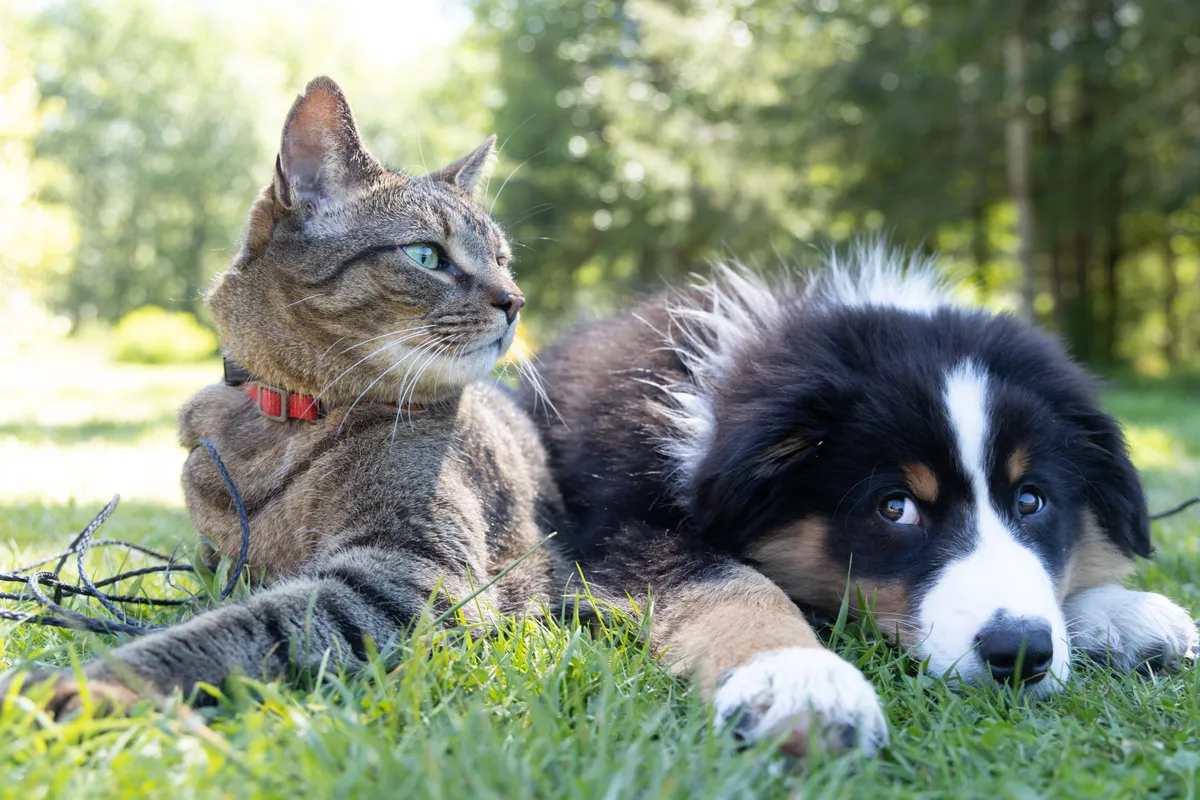Owning a dog or two… or three is a great way to get outdoors and make the most of the wonderful country walks on our doorstep. And whether it’s a dog, cat, rabbit or other furry friend, having pet insurance takes away the worry of unforeseen costs should they become poorly or need treatment in the months and years to come.
Our essential guide will help you determine which insurance is best for you and your pet with helpful tips on what to look for and how to find the best deal…
If you’re looking for a quick comparison of the best pet insurance from 15 providers on the market, check out our pet insurance comparison tool that we’ve developed with Quotezone.

Edited 10/05/24 to reflect Seopa's most up-to-date saving figures
What is pet insurance?

If your pet becomes ill or is injured, pet insurance helps to cover the cost of vet treatment and expenses, including x-rays, operations and medications. It can also cover you for other costs too such as dental care, emergency care abroad, kennel or cattery fees if you need to go into hospital and are unable to care for them as well as adverts and rewards for a lost or stolen pet and third party liability if your pet causes damage or harm to a property or another person or animal.
Why do I need pet insurance?
The main reason why you should take out pet insurance is if you’d struggle to pay vet’s bills and treatment should your pet become injured or ill. If you’re not covered you could be faced with costs that run into the hundreds or thousands and it’s usually unforeseen so it’s not something you can really budget for otherwise.
Your pet’s age is a big factor, as younger animals are usually cheaper to insure, and pre-existing conditions may not be covered though each insurer and policy is different. Pet insurance won’t usually include vaccinations and check-ups either so these will be extra costs on top.
What’s covered with pet insurance?
Pet insurance policies differ between different providers and the level of cover you choose. They usually include vet’s bills and treatment for accidents, injuries and illness including x-rays, operations, procedures and medications as standard.
Insurance can also cover the cost of hereditary and congenital conditions, long-term and ongoing issues, dental care and alternative treatments, depending on your policy.
Additional levels of pet insurance can also include the purchase price of your pet in an instance of loss or theft, the cost of advertising and a reward for their recovery, treatment for behavioural problems, death by illness or injury, boarding costs if you need to be in hospital for four days or more, emergency treatment when abroad and liability cover (dogs only) if they are involved in an accident and cause damage or harm to someone else or their property.
Different levels of pet insurance cover
There are four different types of pet insurance to choose from, so make sure you select the best option for you and your pet:
Lifetime cover

The most comprehensive of pet insurance, so long as you continue to pay your premiums during your pet’s life, you will be insured year in, year out. This is no matter what your pet’s age or if they have any conditions now or in the future. Keep in mind that premiums can go up and are likely to as your furry friend gets older.
Annual or time limited

These policies cover you for 12 months on a rolling basis so each year you can compare the cost from different providers and switch to someone else if you prefer. This usually works out cheaper but it tends not to cover any pre-existing conditions and may have other exclusions so always read the small print before signing up.
Accident only

This is the least expensive pet insurance and it simply covers any accidents your pet may suffer but it won’t cover illness.
Maximum benefit or per condition

You may prefer this type of cover that provides a fixed sum to treat each illness or injury for as long as you have the policy in place. There may be a limit on how many illnesses or injuries your pet is covered for so always check.
What about multi-pet insurance?

When you have more than one loyal companion, you can often save money by taking out multi-pet insurance. It works just like single policies, where you select the cover you want (accident only, accident and illness and so on) for your pet’s lifetime or for a 12-month period but as you’re paying for more than one pet on one policy, it usually offers a discount.
This isn’t really suitable if you want different levels of cover for different pets, as multi-pet insurance provides the same level for all pets on the policy.
Best pet insurance for 2025
Just like you would for car or home insurance, you can compare costs online by visiting different comparison sites. You can save time and money by heading to the pet insurance tool that we've developed with Quotezone.
What does dog insurance include?

If you’re unsure whether to take out pet insurance, consider the fact that dogs are more likely to benefit from it than cats or other animals. This is because generally they need more vet care than cats and it’s also more expensive to treat them.
Some pedigree breeds can also be prone to health issues and hereditary conditions as well as being more likely to be stolen so it’s even more important to consider insuring them – bear in mind that the insurance premiums will usually cost more for pedigrees.
Insurance for your dog can include covering you for the cost of vet’s fees, diagnosis and treatment, consultations, examinations, x-rays, operations, medication and overnight stays.
You might want to pay extra to cover third party liability, dental care if it’s not already included as well as the cost of advertising and a reward if your dog is lost or stolen.
What does cat insurance cover?

Just like for dogs, cat insurance can also cover your costs for vet’s bills if they become ill or injured.
Depending on the policy and level of insurance chosen, you will also be protected against the cost of treatment and medication, the cost of finding a lost or stolen cat, their purchase price (especially if you have a pedigree) and cattery fees if you need to be in hospital for any length of time.
What isn’t covered?
Most policies come with exclusions and this is where certain costs aren’t covered. These usually include routine vaccinations, pre-existing conditions, pregnancy and giving birth and preventative treatments.
What about other pets?

Most of the big insurers will also cover rabbits, as they tend to be prone to injury, illness and disease so bills can quickly stack up.
For any other pets, you are more limited in choice so check out specialist providers such as Exotic Direct, British Pet Insurance and Pet Assure.
How much does pet insurance cost?
According to Compare The Market, the average monthly cost of dog insurance is £9.93, which is a small price to pay when you think of the alternative - forking out hundreds or thousands of pounds without any notice.
Cat insurance tends to be cheaper and the younger the pet, the less the premium, whichever pet you have, so it’s always best to get insurance in place at the very start.
You could pay from £3.35 per month* (*Price per month for cover based on a dog, Timothy, aged 2 months, no known medical conditions, up-to-date vaccinations, and microchipped. Based on quote data provided by Seopa Ltd during January 2024. The quote price you could achieve is dependent on your
individual circumstances).
Compare quotes with up to 15 UK pet insurance providers with the pet insurance comparison tool that we’ve developed with Quotezone.
What to look for in pet insurance

You’re naturally going to be influenced by the price when it comes to shopping around for pet insurance but there are other things to take into consideration.
Look at the different levels of cover and types of policy to see which is best for you and your pet. Think about the age of your pet, their history and health, breed and what you could realistically afford if you didn’t have pet insurance in place.
Read customer reviews online, ask your local vet for their recommendations as well as family and friends.
How to find cheaper pet insurance
Your first port of call should be online comparison sites so you can see like for like policies and compare prices.
Some charities such as the PDSA, Blue Cross and RSPCA may be able to help with vet’s costs if you don’t have pet insurance and are on certain means-tested benefits.
You can also bring the cost of the premium down if you offer to pay a higher excess so always ask your provider for details.
By selecting the right pet insurance for you and your pet, and the right level of cover, you’ll have peace of mind should they need help now or in the future.
